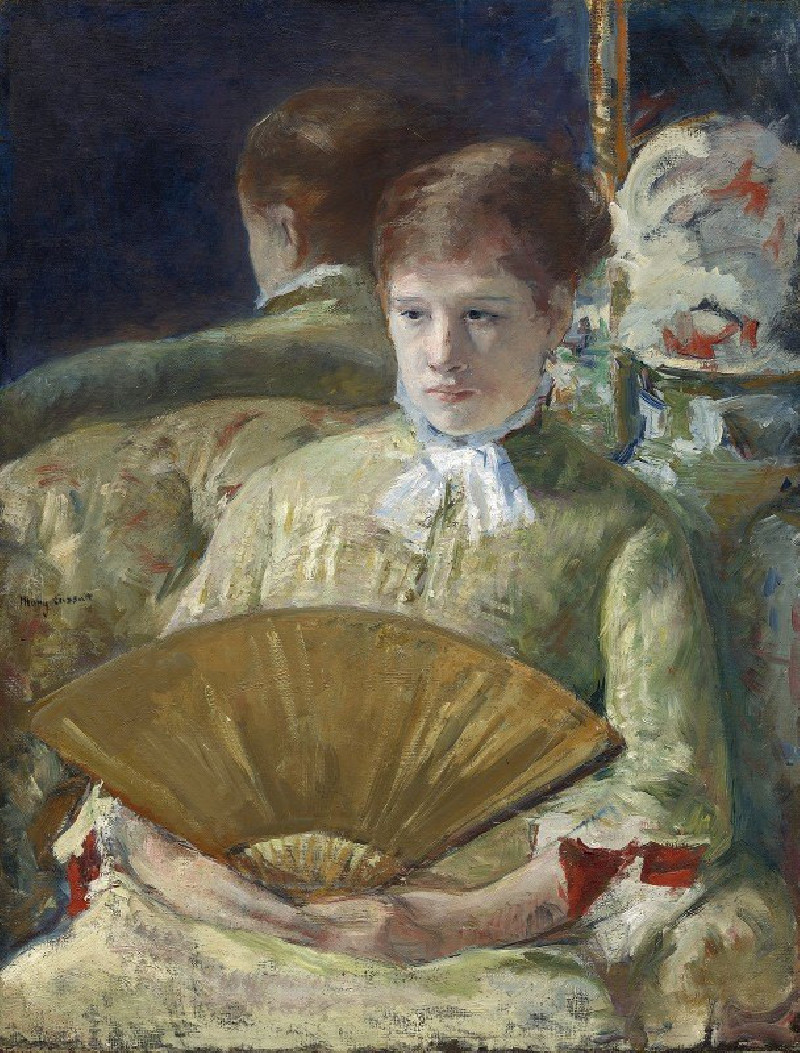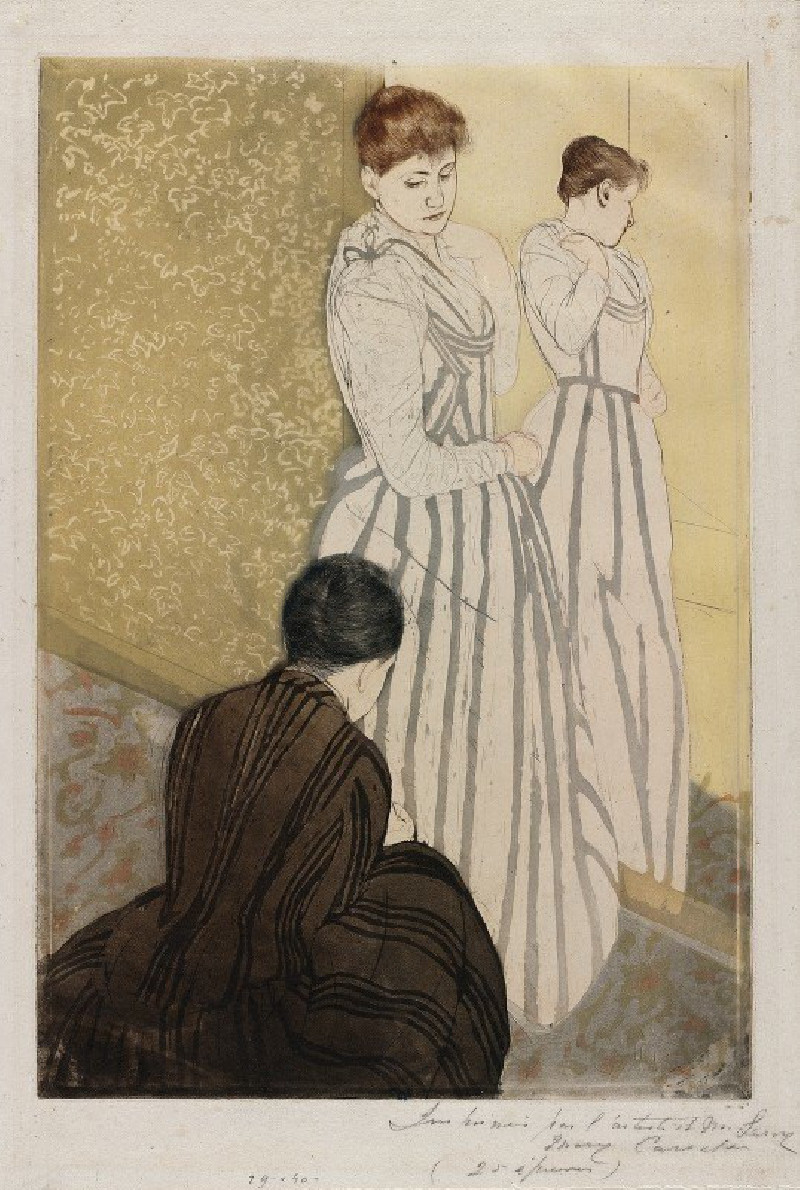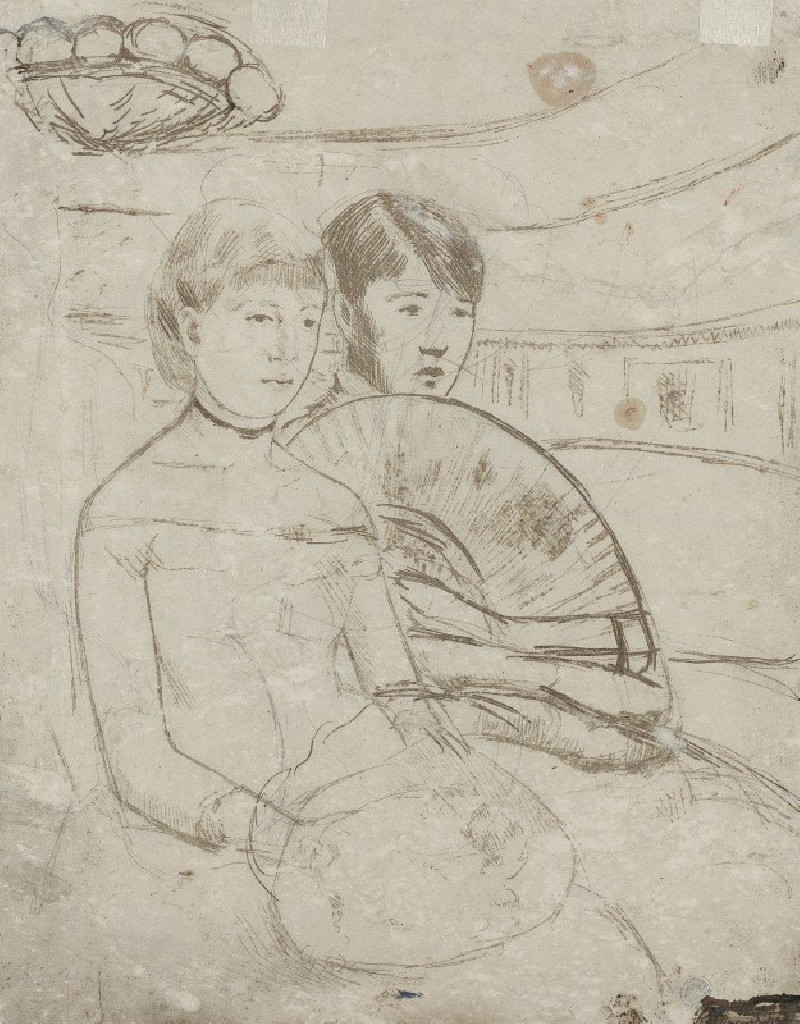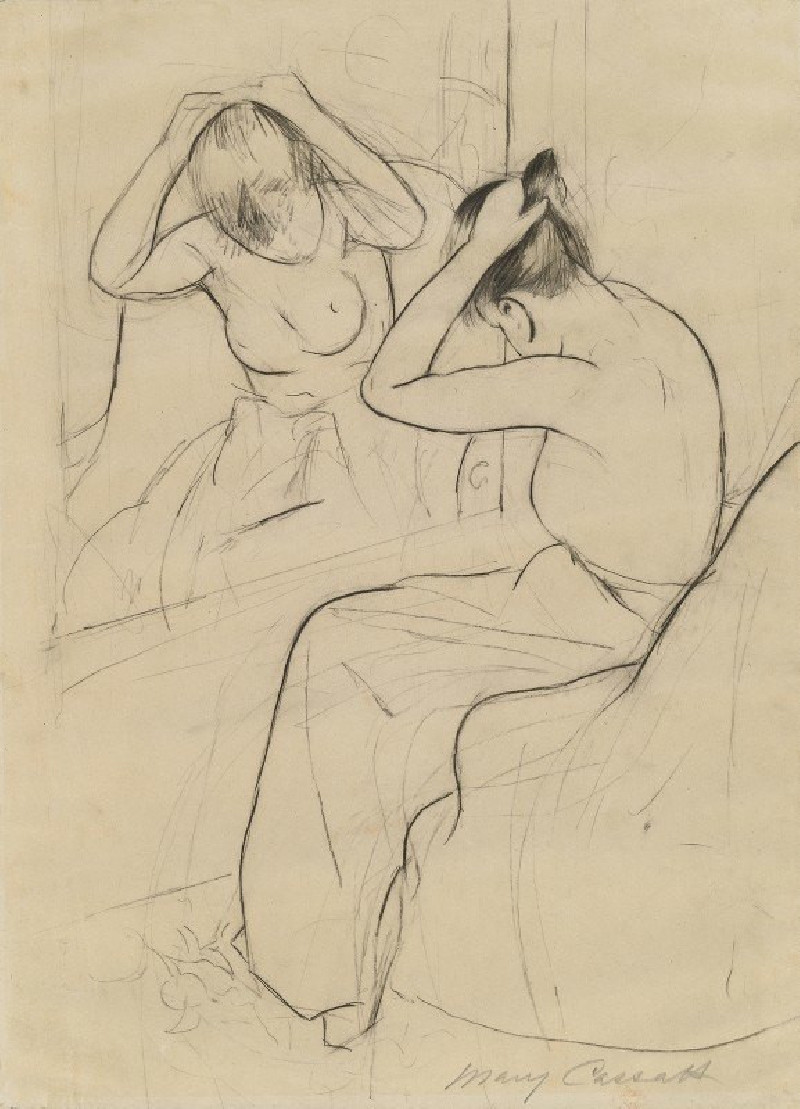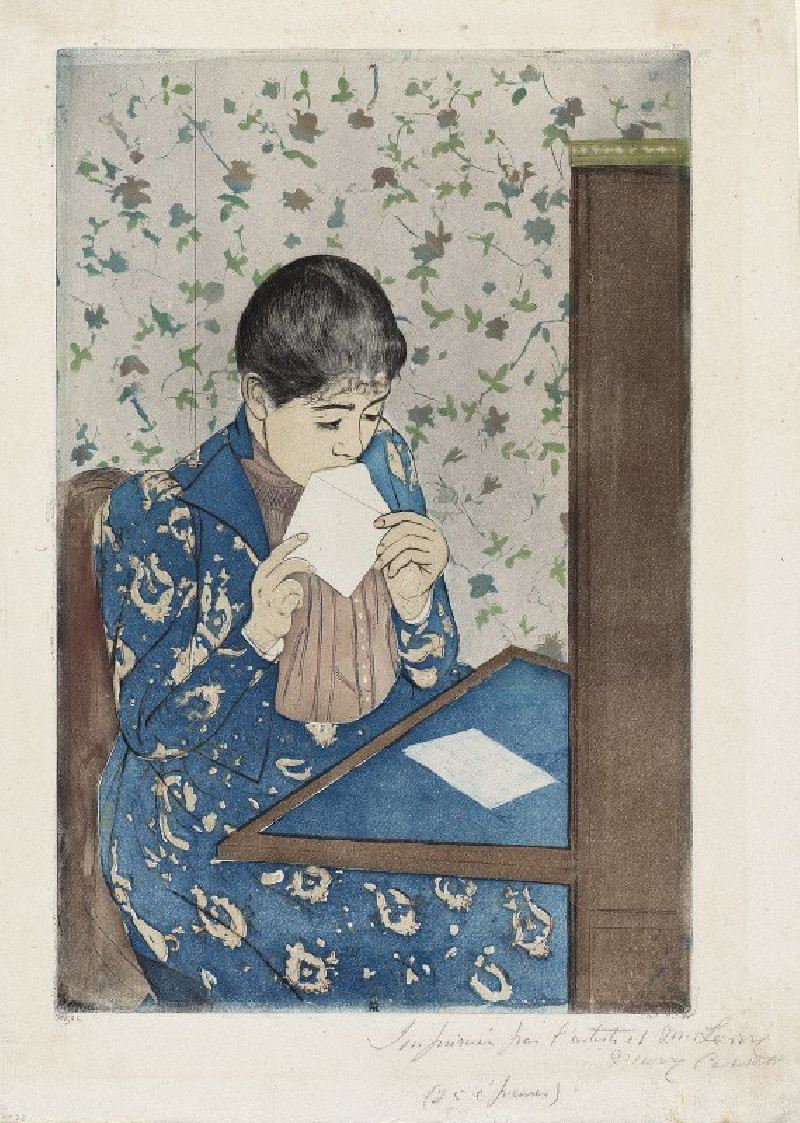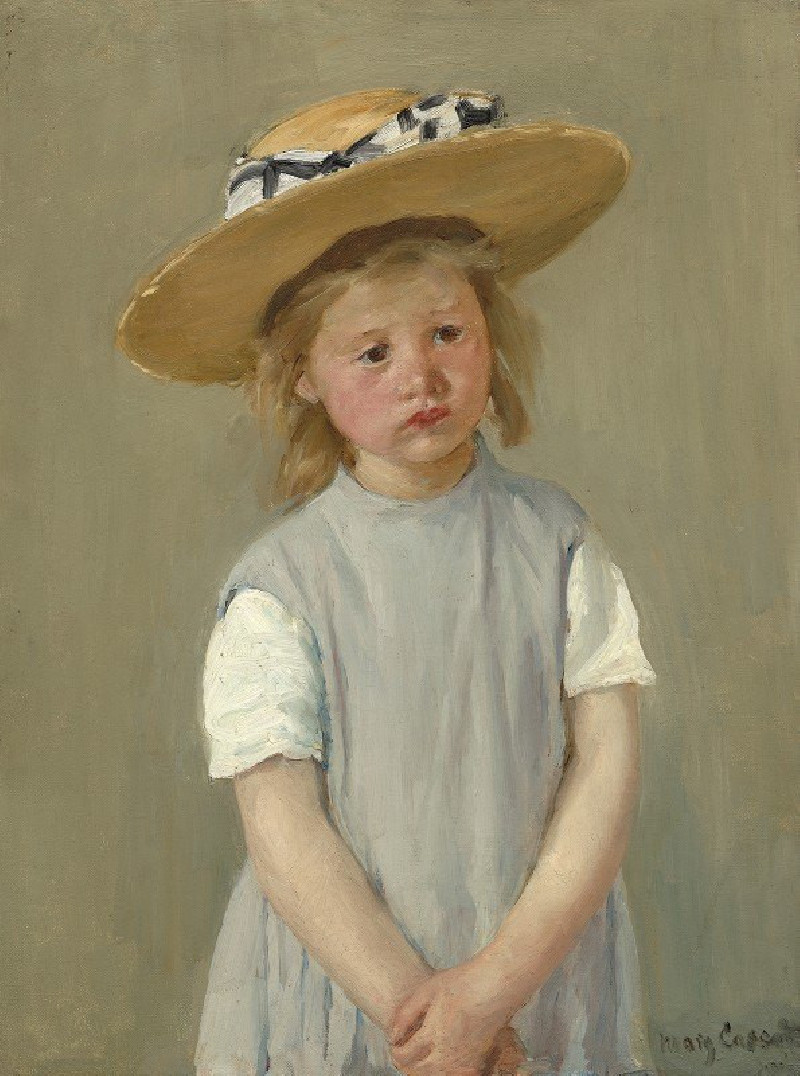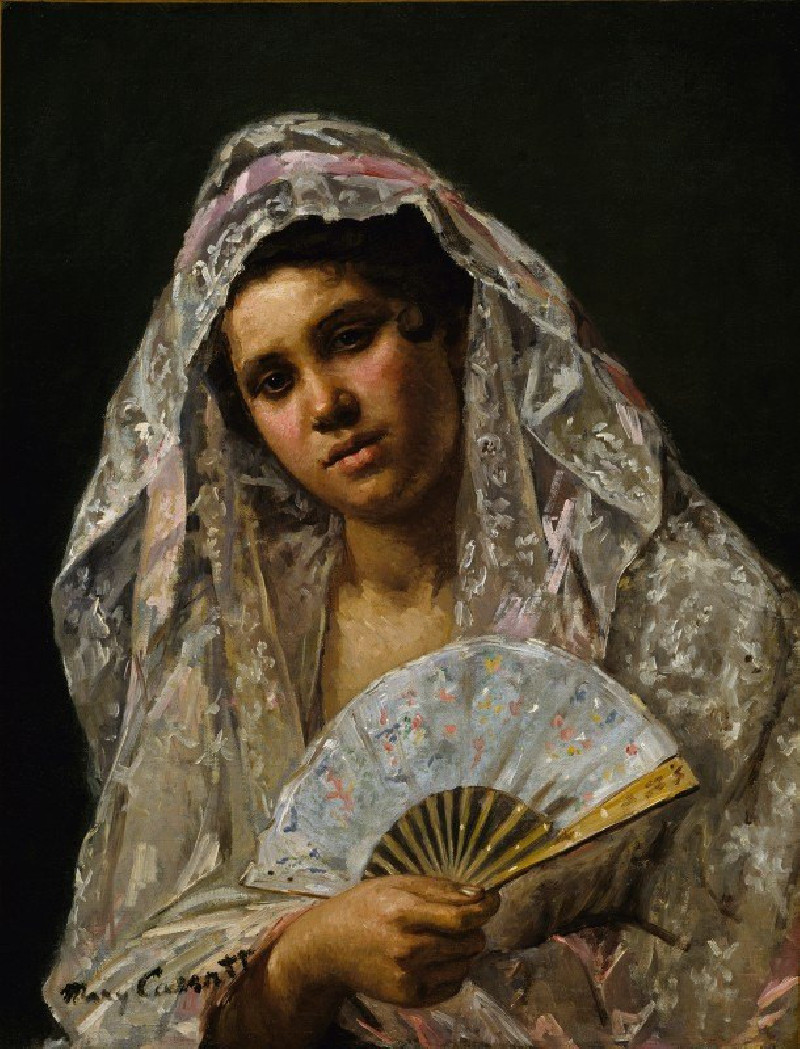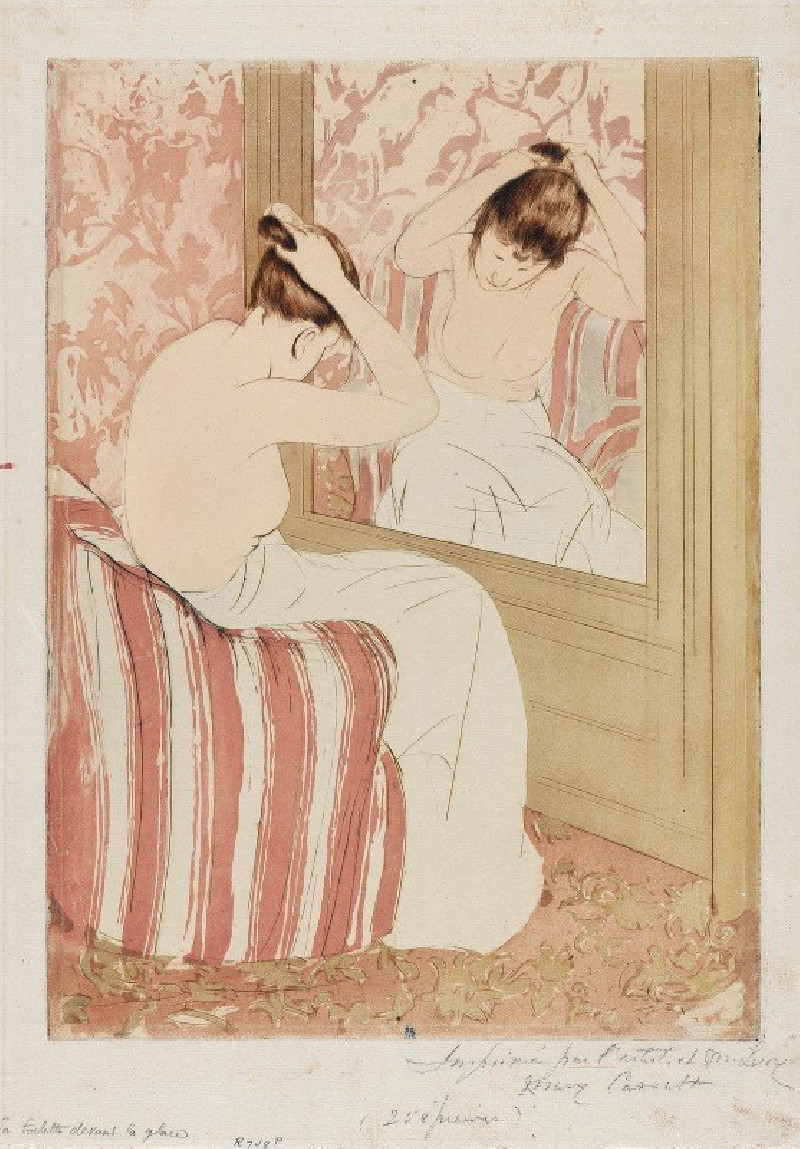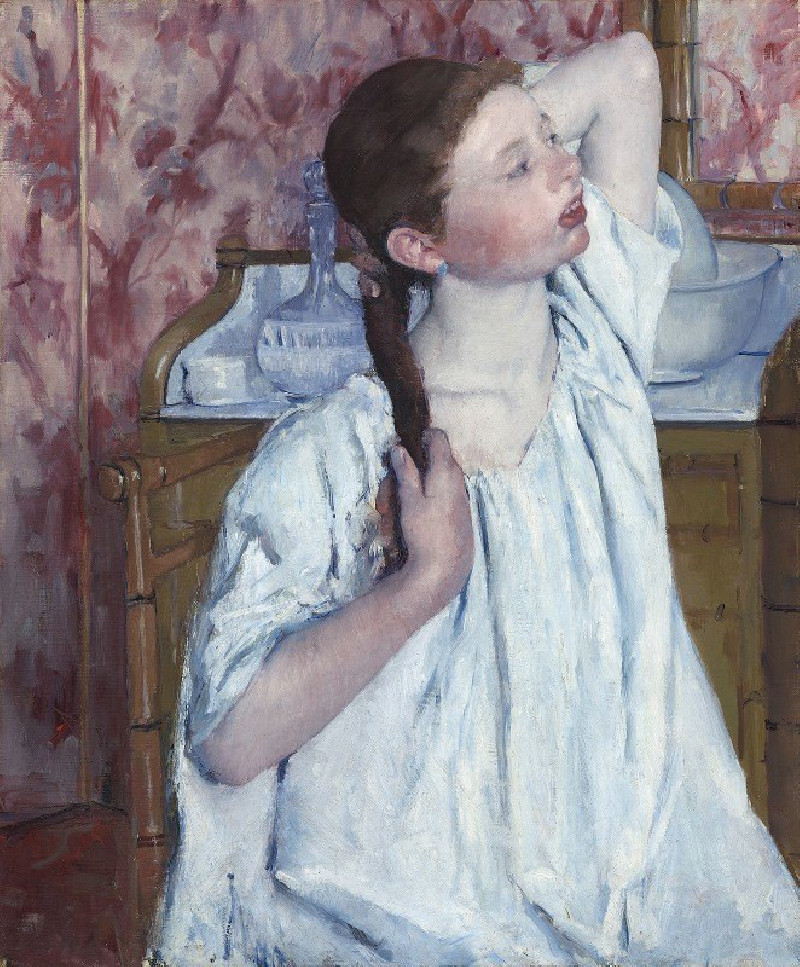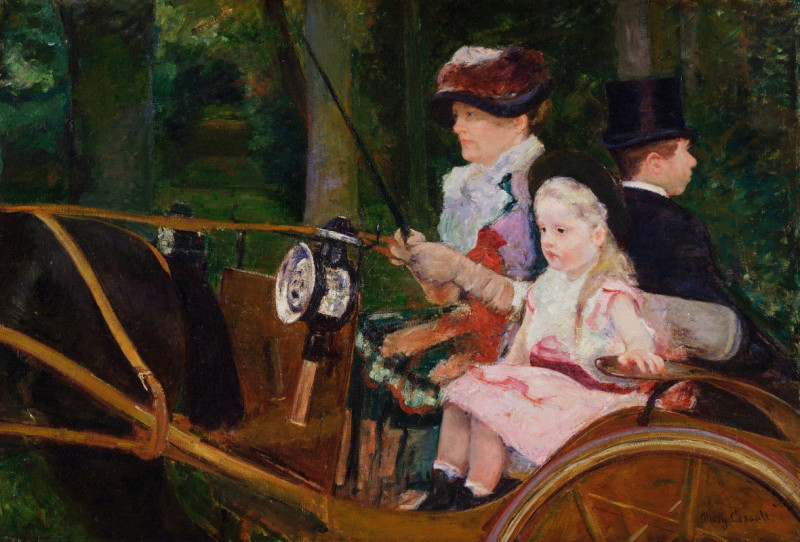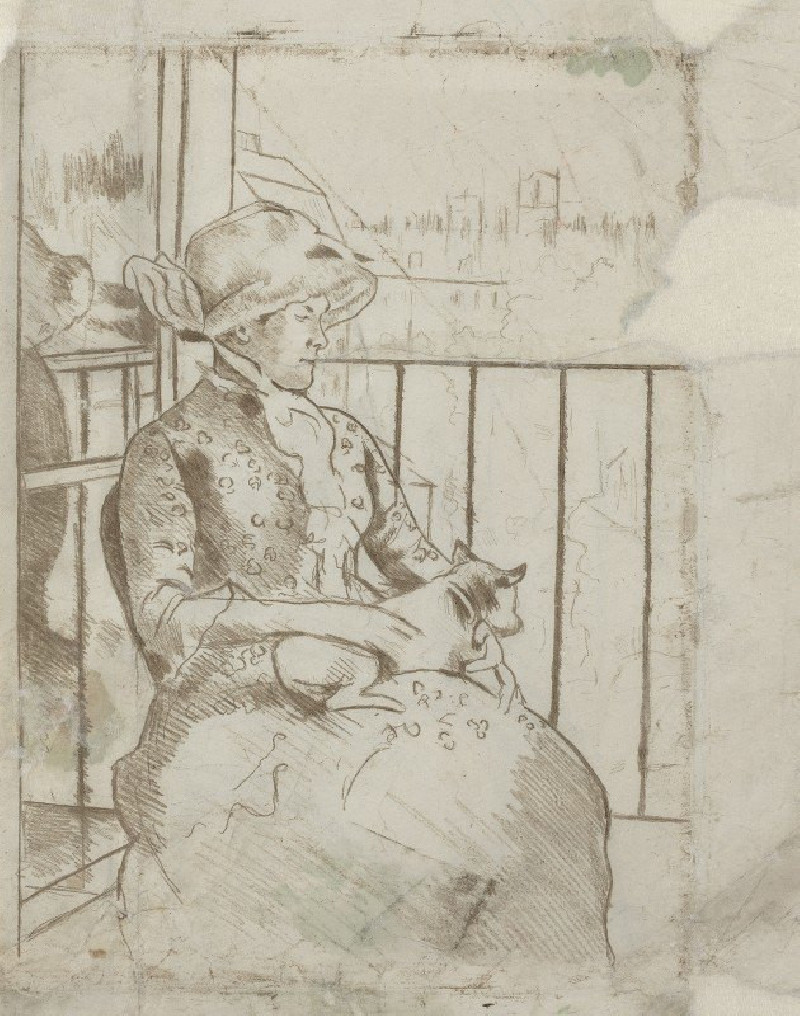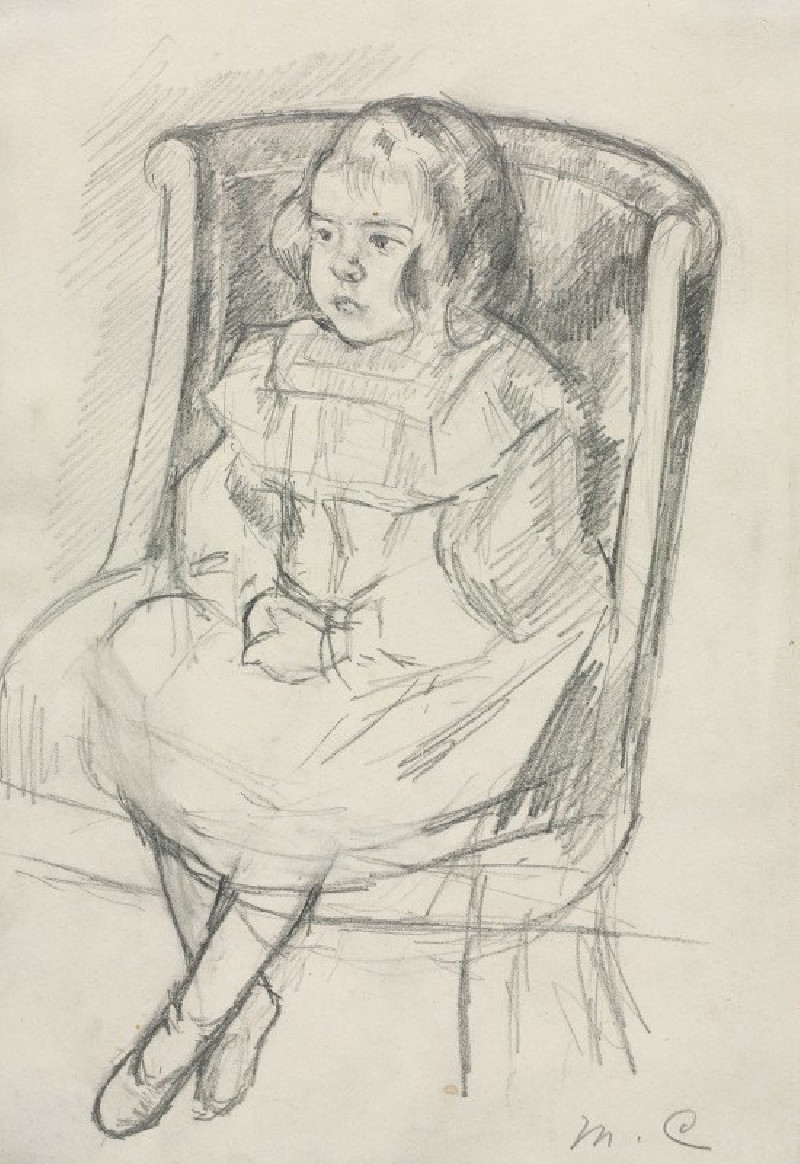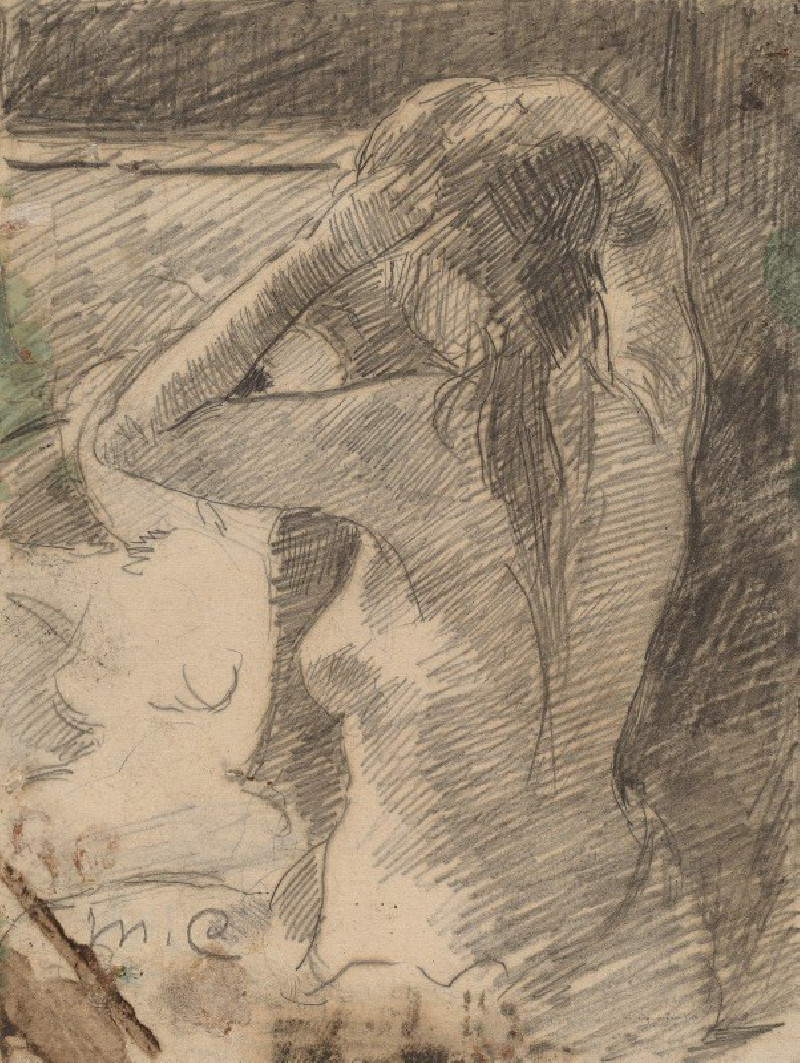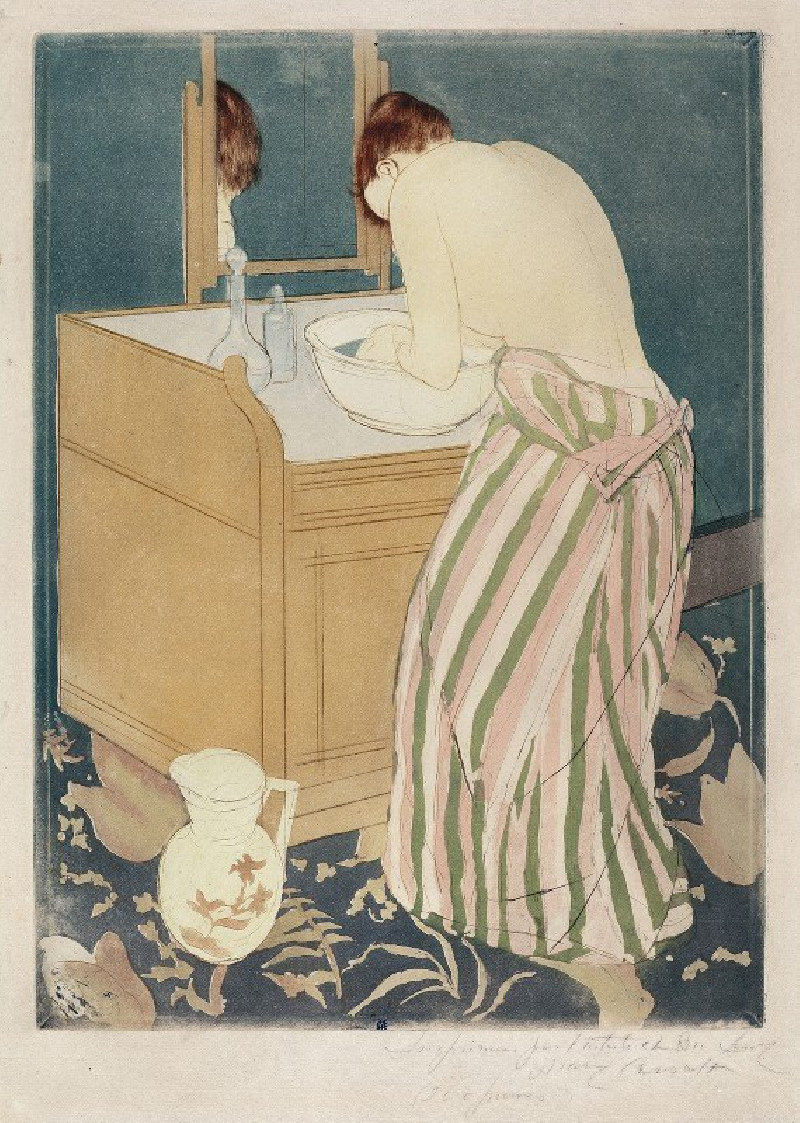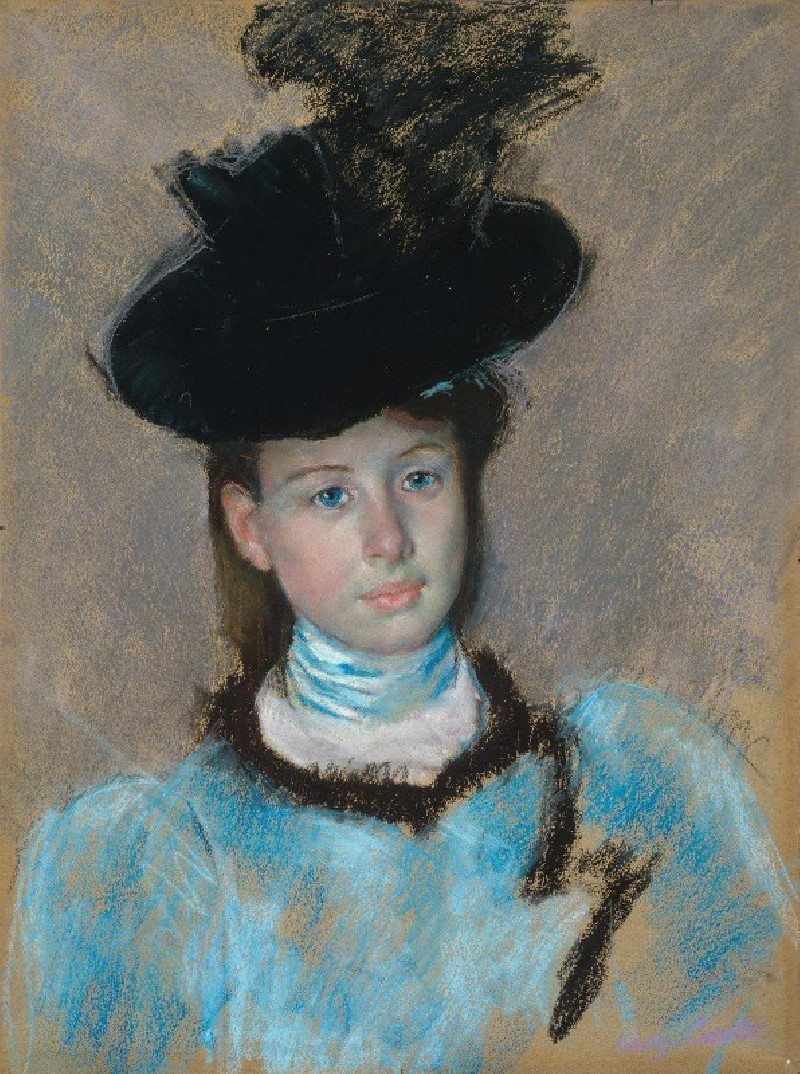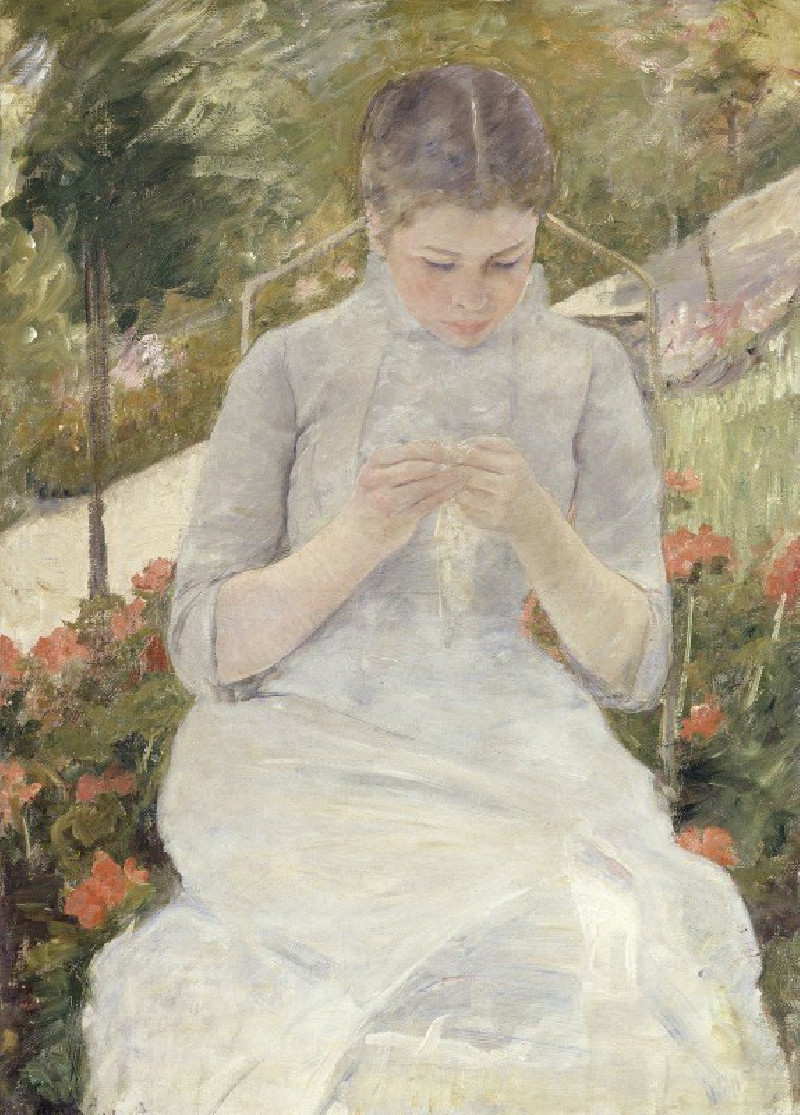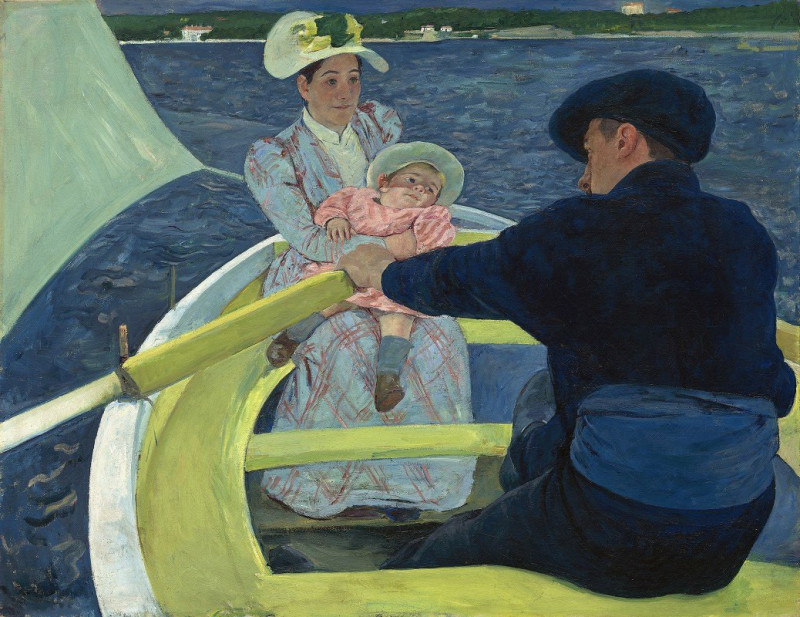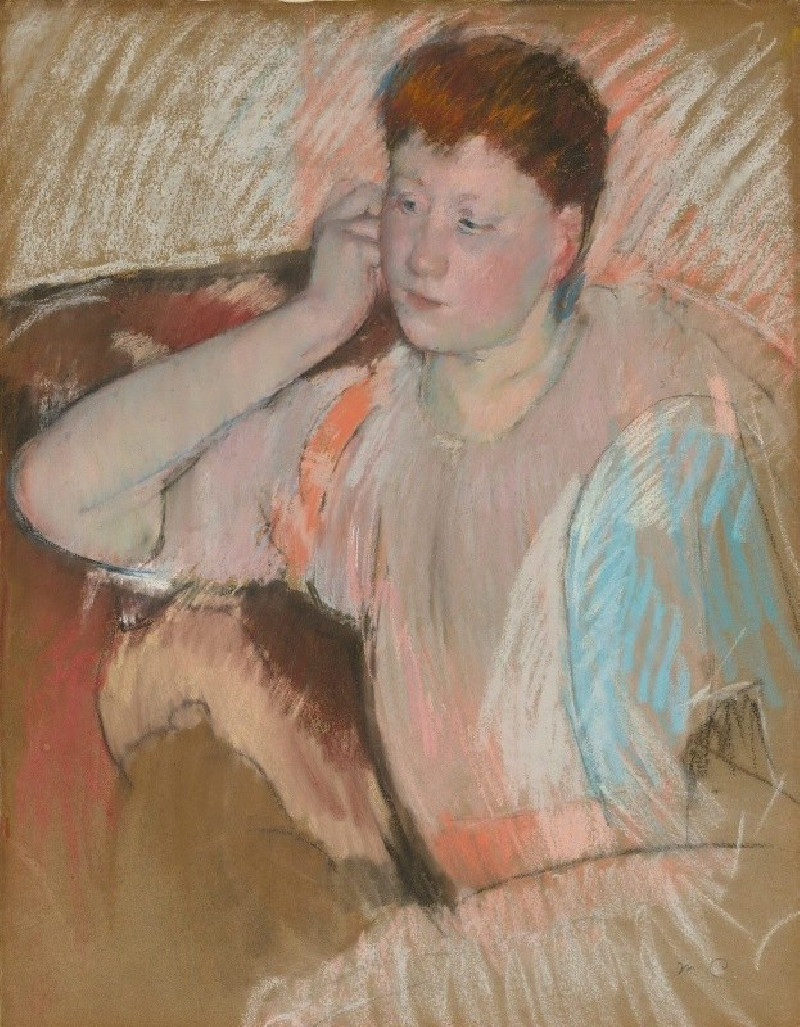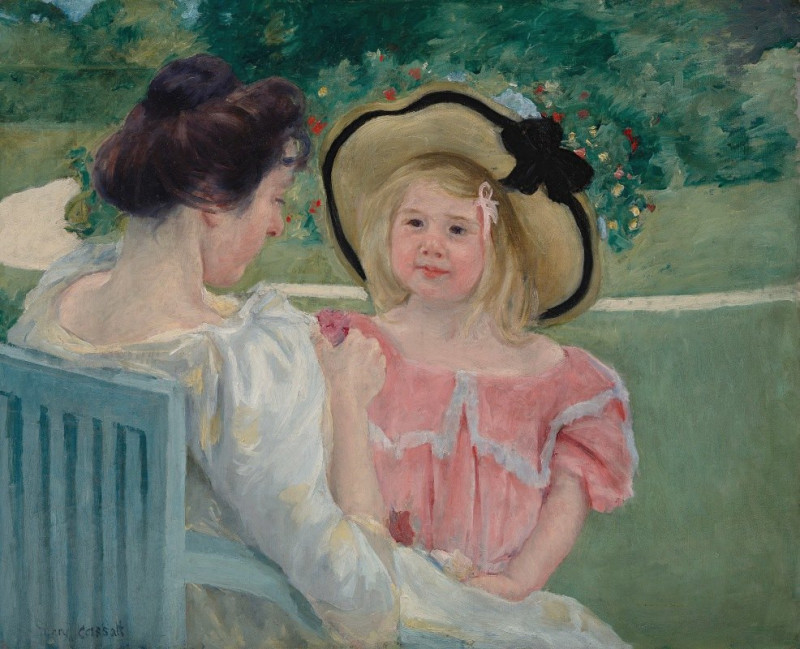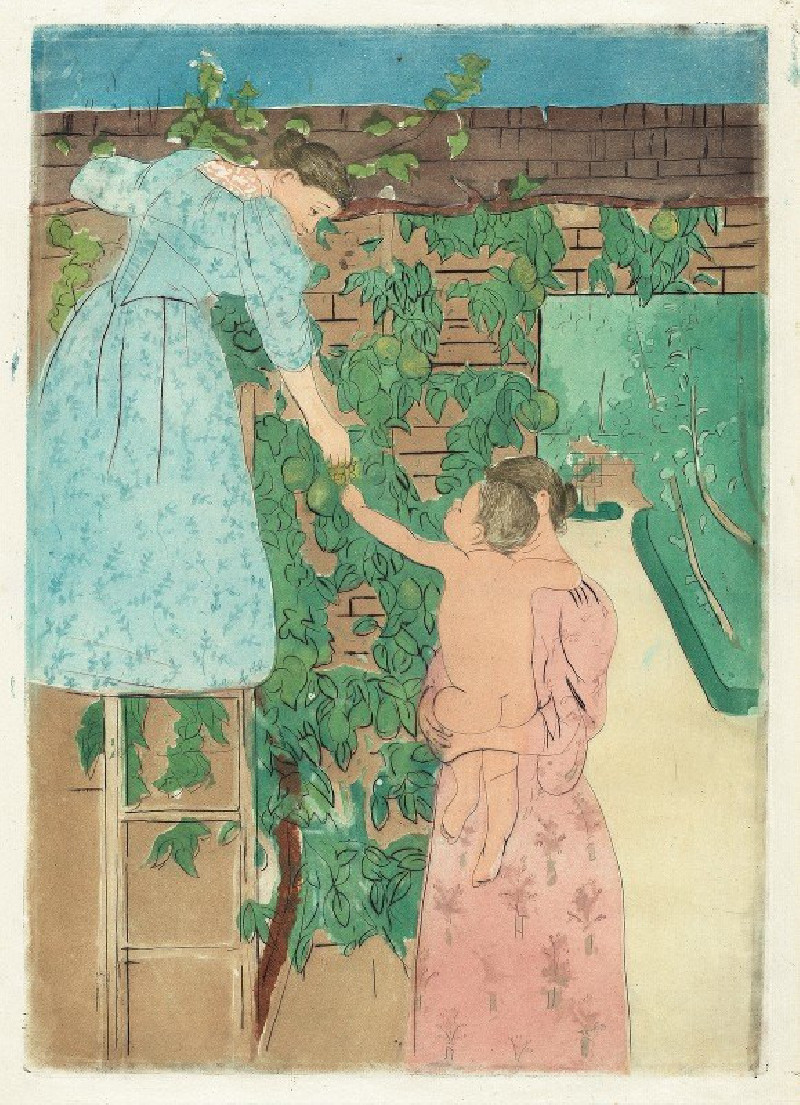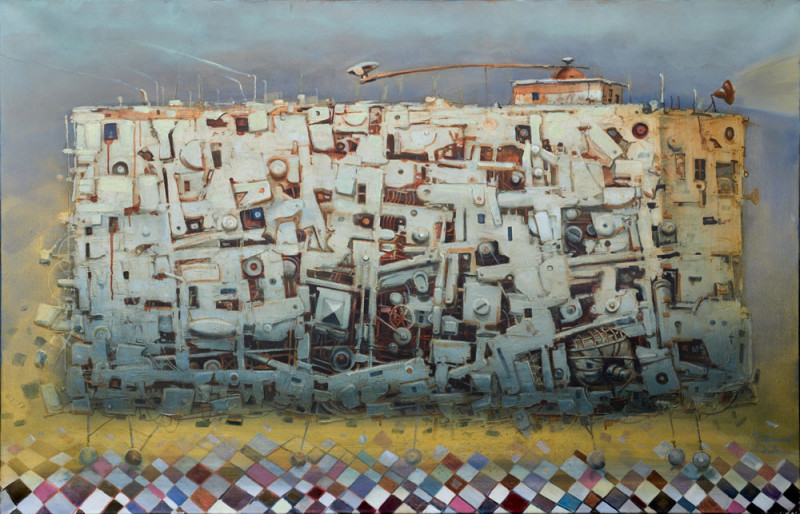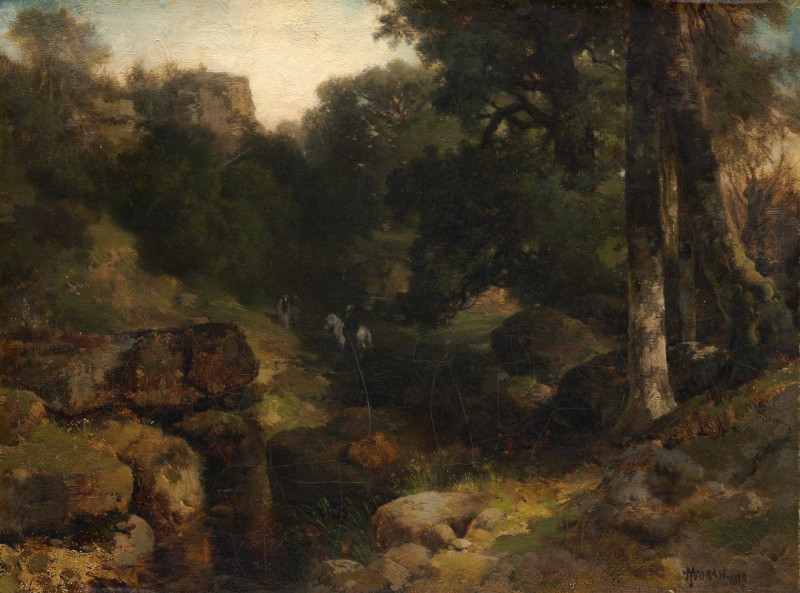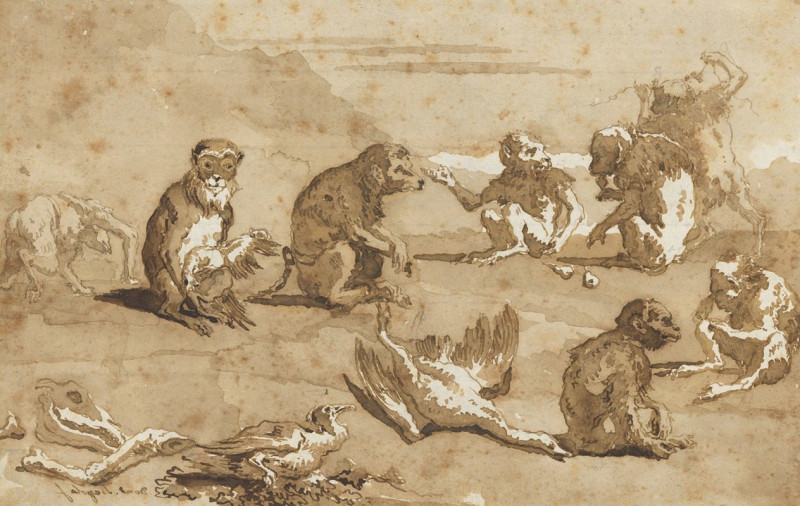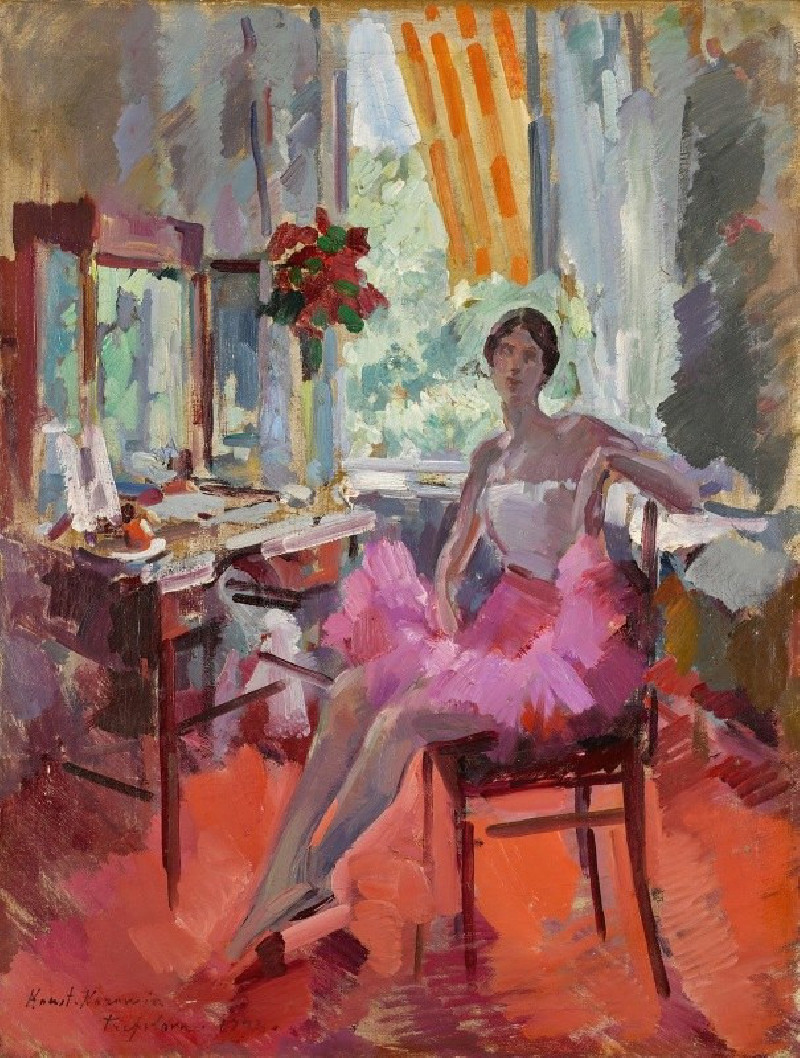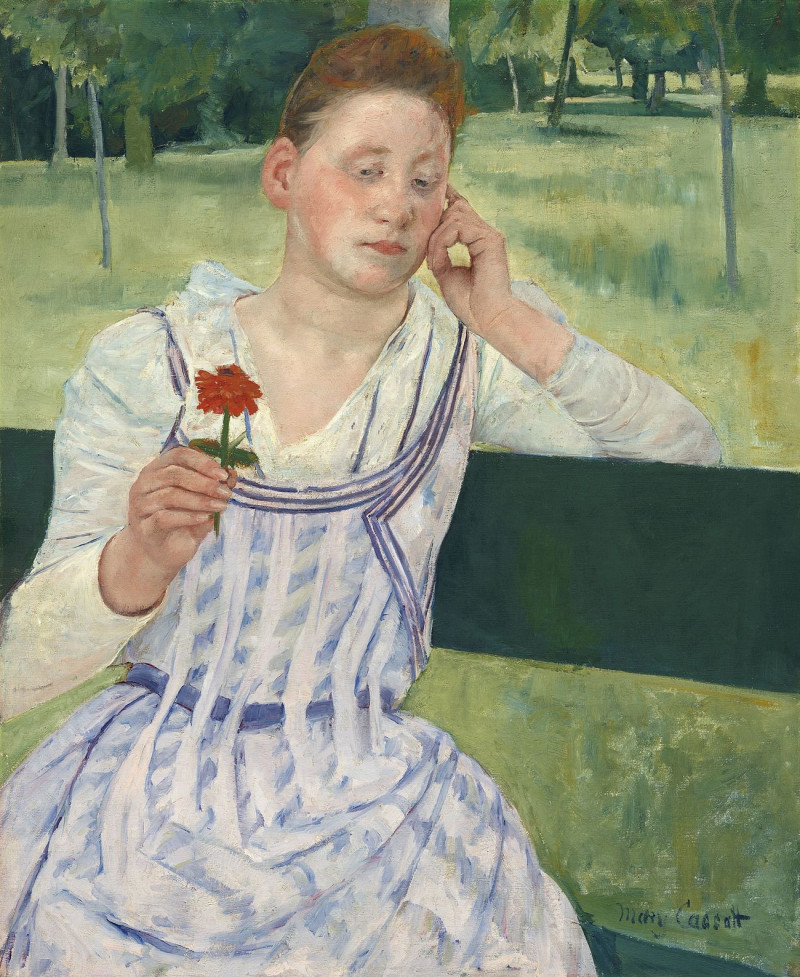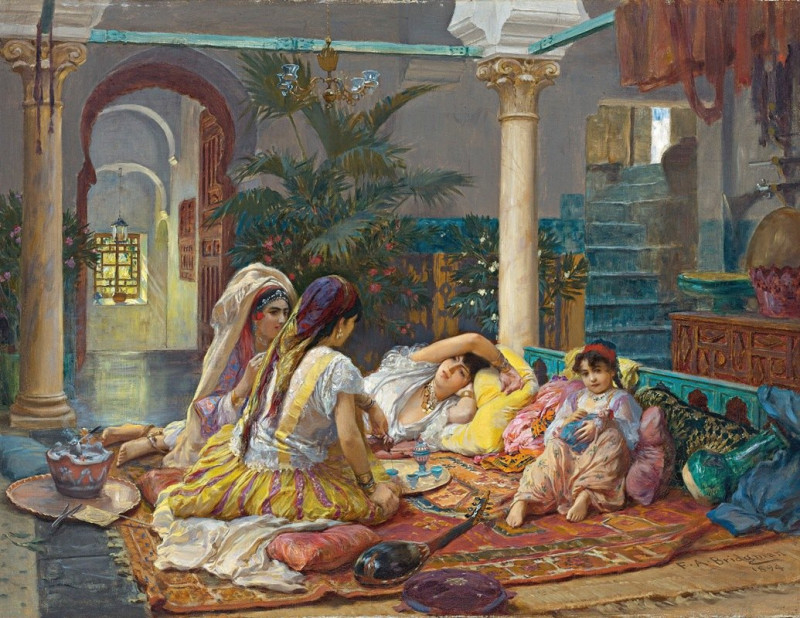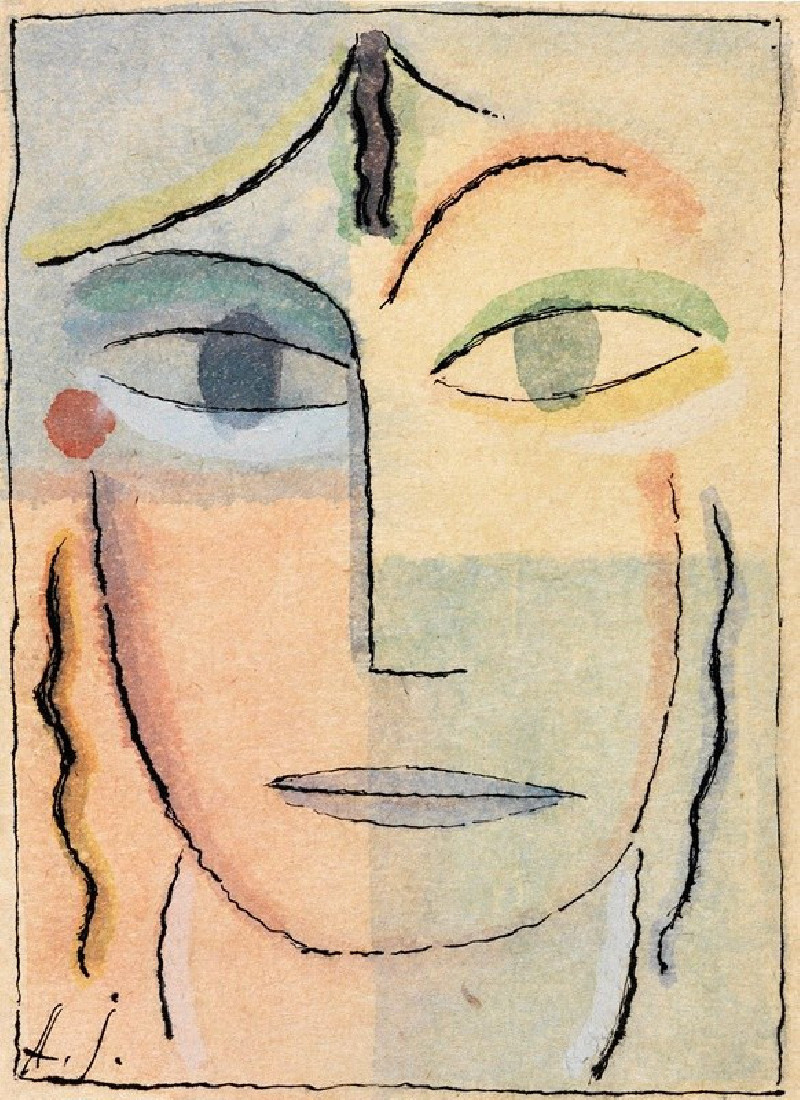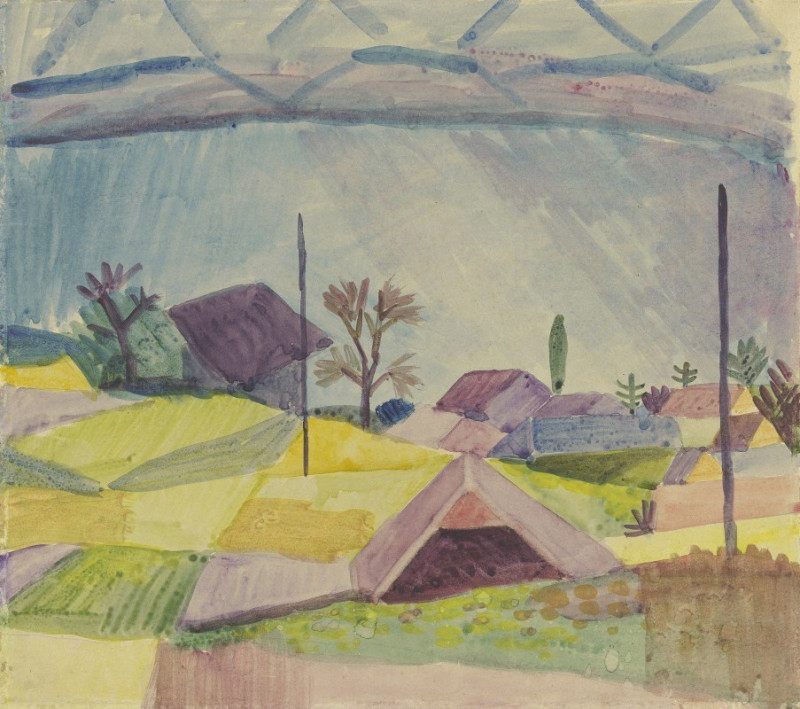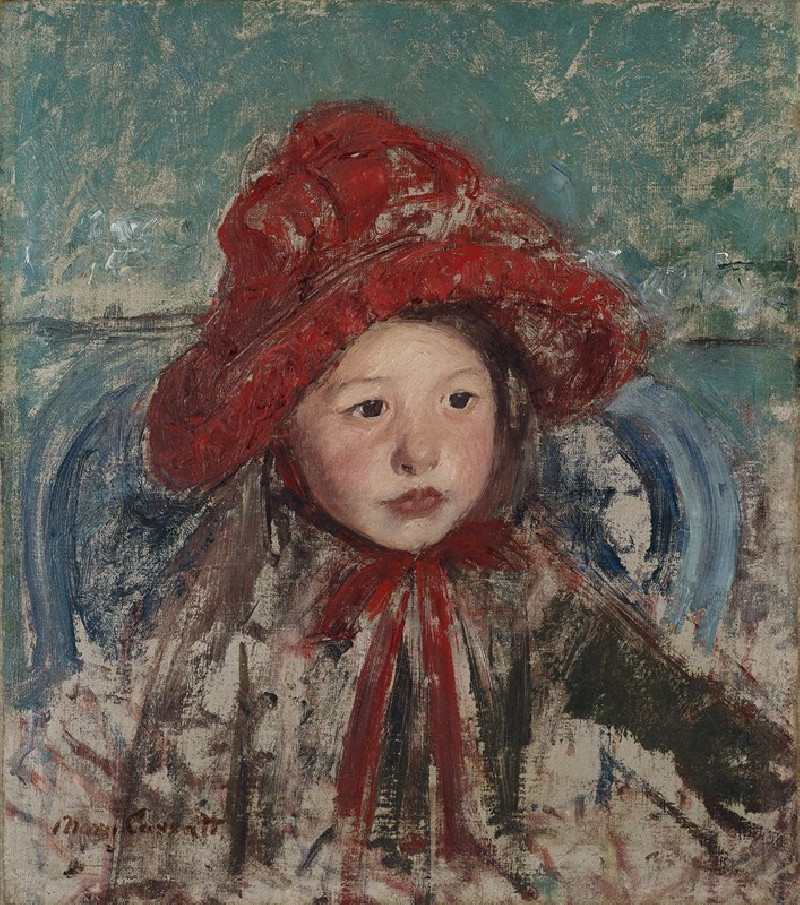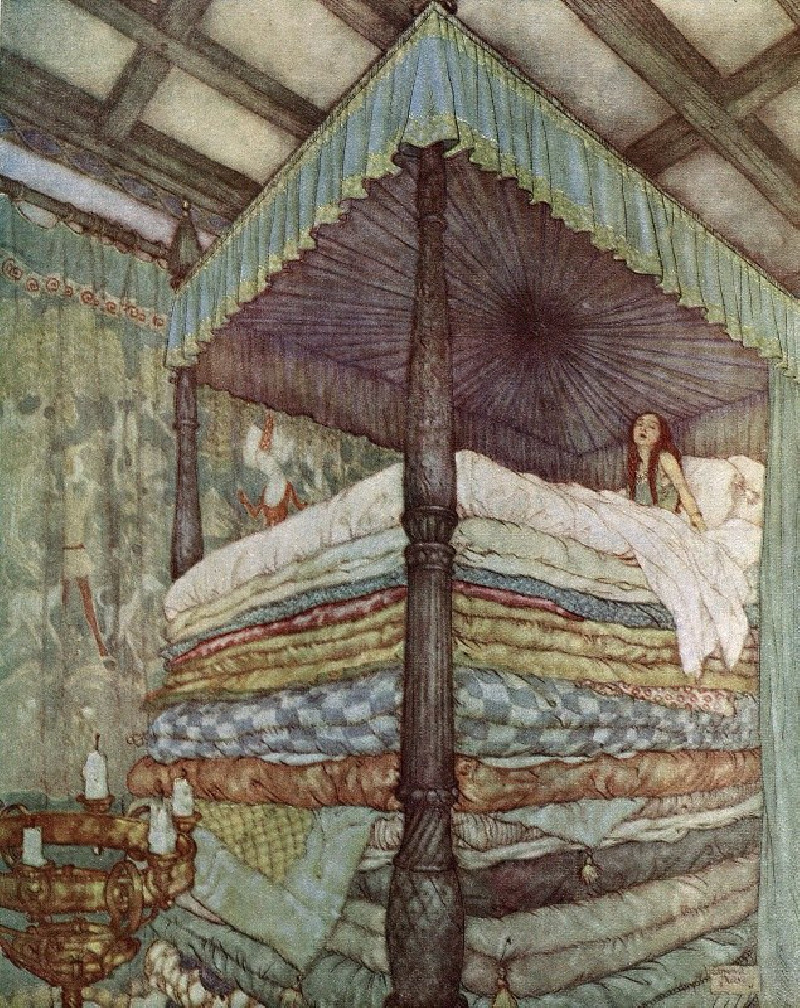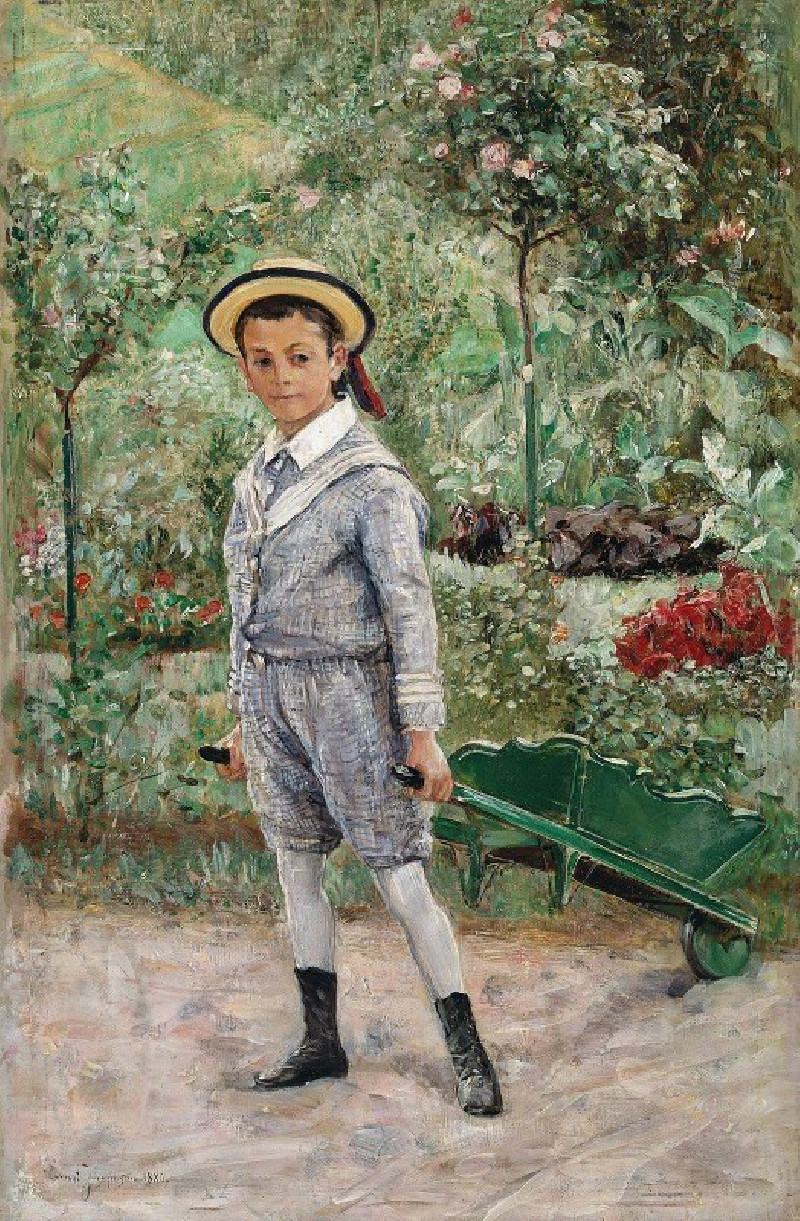Sara In A Green Bonnet
Technique: Giclée quality print
Recommended by our customers
More about this artwork
"Sara in a Green Bonnet" by Mary Cassatt is a vibrant and evocative portrait that captures the innocence and curiosity of a young girl. In this artwork, the focal point is undoubtedly Sara, depicted with flushed cheeks and a gaze that seems to directly connect with the viewer. Mary Cassatt has masterfully rendered a sense of immediacy and intimacy through her brushwork and choice of colors.The green bonnet that encircles Sara's face is adorned with lush greenery and delicate white flowers, suggesting aspects of youth and freshness. The bonnet not only frames her face but also enhances the rosy hues of her cheeks and the clear, bright tone of her eyes. The texture of the bonnet and the foliage it bears are painted with quick, confident strokes, emphasizing the vibrancy of natural elements.Sara's attire, with a hint of golden-brown fabric visible beneath the encompassing green shawl, adds warmth to the composition, balancing the cool tones of the green. The contrast helps in drawing attention to her face, the portrait's emotional center.Cassatt's work is renowned for its ability to capture the ephemeral moments of childhood with an almost photographic realism, enriched with impressionistic flair. This painting is a fine example of her skill in using color and form to evoke emotion and personality, making "Sara in a Green Bonnet" not just a depiction of a child, but a lively portrayal of youthful spirit and charm.
Delivery
Returns
Mary Stevenson Cassatt was an American painter and printmaker. She was born in Allegheny City, Pennsylvania (now part of Pittsburgh’s North Side), but lived much of her adult life in France where she befriended Edgar Degas and exhibited with the Impressionists. Cassatt often created images of the social and private lives of women, with particular emphasis on the intimate bonds between mothers and children.
She was described by Gustave Geffroy as one of "les trois grandes dames" (the three great ladies) of Impressionism alongside Marie Bracquemond and Berthe Morisot.In 1879, Diego Martelli compared her to Degas, as they both sought to depict movement, light, and design in the most modern sense.


